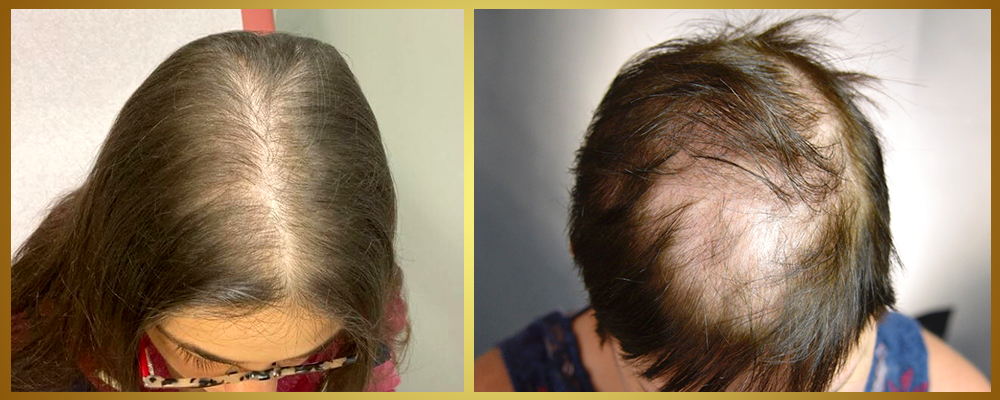Table of Contents
Female Baldness: Types, Symptoms, and Causes
Baldness in women is also known as baldness in women. Female pattern hair loss (FPHL) is a common but worrying disorder that affects millions of women around the world. Women’s baldness looks different. and often causes emotional and mental distress.
This is different from baldness in men. Hair loss can occur gradually or suddenly due to underlying causes. In this complete guide, We will explore the types, symptoms, and causes of baldness in women.
Types of Female Baldness

1. Androgenetic Alopecia
This genetic condition causes gradual thinning along the part line. Hair becomes finer over time but complete baldness is rare in women.
2. Telogen Effluvium
Triggered by stress, illness, or hormonal changes, this type of hair loss causes widespread shedding but is usually temporary.
3. Alopecia Areata
An autoimmune disorder causing patchy bald spots. Hair may regrow naturally but can fall out again.
4. Traction Alopecia
Caused by tight hairstyles like ponytails and braids, this condition leads to hair loss around the hairline and temples. It’s preventable by reducing tension on the hair.
5. Cicatricial Alopecia
A rare form of permanent hair loss caused by inflammation and scarring of the hair follicles.
Symptoms of Female Baldness
Symptoms of female baldness can vary depending on the type of hair loss, however, common characteristics are:
a. Thinning hair along the part line
b. Increased shedding of hair
c. Patchy bald spots
d. Receding hairline
e. Scalp tenderness or inflammation (in cicatricial alopecia)
When to See a Doctor
1. Sudden or Patchy Hair Loss: Seek immediate attention for rapid or noticeable shedding.
2. Significant Thinning: If hair thinning impacts your self-esteem, consult a professional.
3. Scalp Issues: Itching, redness, or flaking could indicate an underlying skin condition.
4. Family History: Early evaluation is wise if hair loss is common in your family.
5. Ineffective Treatments: If over-the-counter solutions don’t work after a few months, consider seeing a doctor.
Causes of Female Baldness
a. Genetics: Hereditary androgenetic alopecia.
b. Hormonal Changes: Fluctuating estrogen and androgen levels.
c. Stress: Stressful events can cause telogen effluvium.
d. Nutritional Deficiencies: Lack of iron, biotin, and vitamin D.
e. Medical Conditions: Thyroid disorders and medications like chemotherapy.
f. Hairstyling Habits: Damage from heat, chemicals, or tight hairstyles.
g. Aging: Slower hair growth due to reduced estrogen after menopause.
Diagnosis
Medical history and physical exam: A review of your health history and a scalp examination help determine the cause and pattern of your hair loss.
Blood tests: Blood tests to look for problems with your thyroid, iron, or hormones.
Scalp biopsy: Rarely, a biopsy is performed to rule out other conditions.
Treatments
1. Minoxidil: A topical treatment that stimulates hair growth and slows hair loss.
2. Anti-androgen drugs: Drugs such as spironolactone that block testosterone
3. Hair Transplant: Surgery to transfer healthy hair to bald spots.
4. Low-Level Laser Therapy (LLLT): Light therapy to promote growth.
5. Platelet-rich plasma (PRP): Injection to promote hair follicle health.
6. Hormone therapy: for hair loss caused by hormones.
7. Lifestyle Changes: Healthy Food stress management And good hair care help support the hair.



